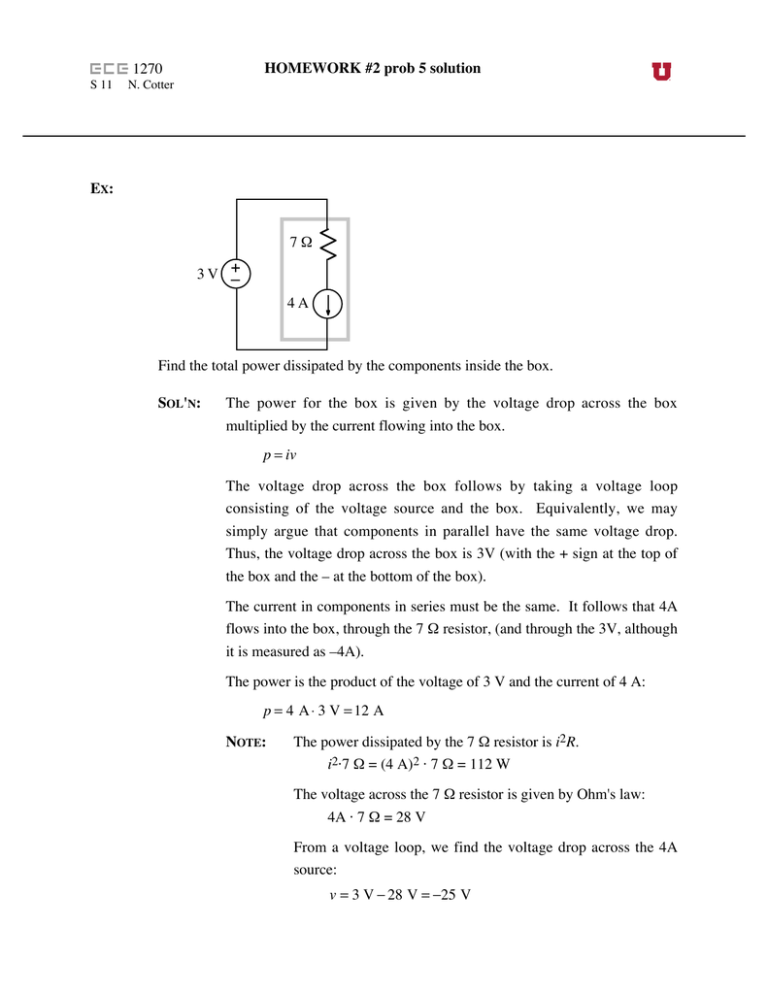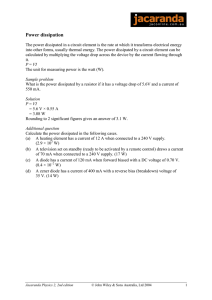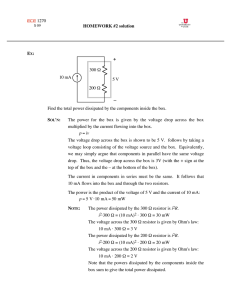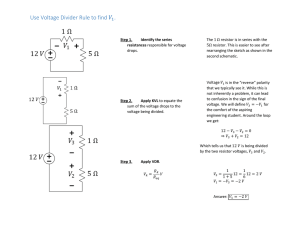1270 HOMEWORK #2 prob 5 solution EX: 7 Ω 4 A 3 V Find the total
advertisement

HOMEWORK #2 prob 5 solution 1270 S 11 N. Cotter EX: 7Ω 3V + – 4A Find the total power dissipated by the components inside the box. SOL'N: The power for the box is given by the voltage drop across the box multiplied by the current flowing into the box. p = iv The voltage drop across the box follows by taking a voltage loop consisting of the voltage source and the box. Equivalently, we may simply argue that components in parallel have the same voltage drop. Thus, the voltage drop across the box is 3V (with the + sign at the top of the box and the – at the bottom of the box). The current in components in series must be the same. It follows that 4A flows into the box, through the 7 Ω resistor, (and through the 3V, although it is measured as –4A). The power is the product of the voltage of 3 V and the current of 4 A: p = 4 A ⋅ 3 V = 12 A NOTE: The power dissipated by the 7 Ω resistor is i2R. i2·7 Ω = (4 A)2 · 7 Ω = 112 W The voltage across the 7 Ω resistor is given by Ohm's law: 4A · 7 Ω = 28 V From a voltage loop, we find the voltage drop across the 4A source: v = 3 V − 28 V = −25 V The power dissipated by the 4A source is the product of the current and voltage: p = 4 A ⋅ (−25 V) = −100 W Note that the powers dissipated by the components inside the box sum to give the total power dissipated. The resistor, however, is dissipating much more power than the entire box! This power creates heat. The heat from the resistor is much larger than the power dissipated by the entire box. The 4A source has a negative power dissipation, but it does not get cold. Instead, it serves as an energy source contributing to the power dissipated by the 7 Ω resistor. The moral of the story is that the power calculation for a circuit might fail to reveal the actual heat generated by that circuit.






